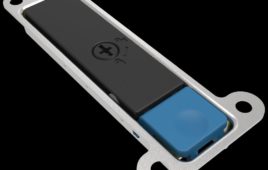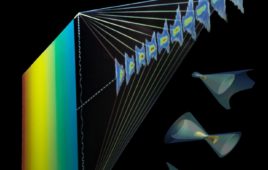U.S. wireless carrier Sprint last week indicated it is on board with an amended proposal from Globalstar to launch low-power terrestrial services in its licensed mobile satellite spectrum.
In a filing with the FCC, Sprint, the Wireless Communications Association International (WCA), and Globalstar urged the Commission to adopt a revised proposal that would allow the latter to use only its 11.5 MHz of licensed mobile satellite service spectrum between 2483.5 MHz and 2495 MHz for low-power terrestrial broadband services and institute a new limit on out-of-band interference.
Submitted on November 9, the revised proposal scales back the scope of the FCC’s original November 2013 proposal, which called for use of Globalstar’s 11.5 MHz of spectrum in addition to 10.5 MHz of unlicensed spectrum in the adjacent ISM band by dropping the use of the latter entirely. In a subsequent filing with Sprint and WCA on November 16, Globalstar also asked the Commission to implement a limit on out-of-band emissions above 2495 MHz as follows: 43 + 10 log (P) dB at the channel edge at 2495 MHz and 55 + 10 log (P) dB at X MHz from the channel edges where X is the greater of 6 MHz or the actual emission bandwidth.
Globalstar said the revised proposal is meant to expedite the approval process by resolving “all remaining interference-related concerns in this proceeding,” including those related to use of the unlicensed ISM spectrum, as well as Broadband Radio Service and Educational Broadband Service operations above 2496 MHz. The company said it was “confident” the services at 2483.5-2495 MHz won’t interfere with Sprint or any other BRS licensees at 2496-2502 MHz or EBS licensees above 2502 MHz. If they do, Globalstar said it would “meet its absolute obligation as an ancillary terrestrial component licensee to mitigate and resolve such interference.”
The tweaks came in response to pushback from several critics – including the Wi-Fi Alliance, the Bluetooth Special Interest Group, Nintendo, Microsoft, the Hearing Industries Association, and others – which raised concerns about interference with Wi-Fi and Bluetooth devices.
“Although the record demonstrates that such interference allegations are without merit, in the interest of moving forward, Globalstar asks the Commission to adopt rules expeditiously for low-power terrestrial operations at 2483.5-2495 MHz,” Globalstar wrote in its early November filing. “Globalstar plans to utilize its 11.5 megahertz of licensed spectrum at 2483.5-2495 MHz for low-power operations that support traditional mobile broadband services, including a variety of voice, data, and text applications. With its future terrestrial partners, Globalstar would operate these low-power systems in a variety of settings across the United States to support high data rates and provide consumers with additional terrestrial broadband capacity.”
In addition to garnering support from Sprint and WCA, the revised proposal also elicited the backing of Hughes Network Systems, which said it supported “removing the outdated regularoty barriers in order to increase the efficient use of spectrum, address rapidly growing data usage, and provide consumers with additional terrestrial broadband capacity.”
Filed Under: Telecommunications (spectrums)




